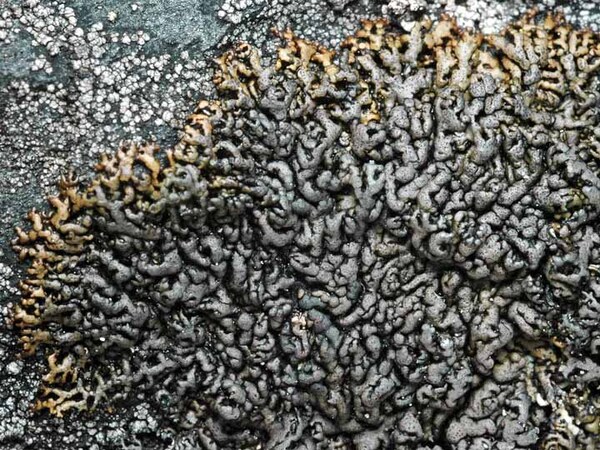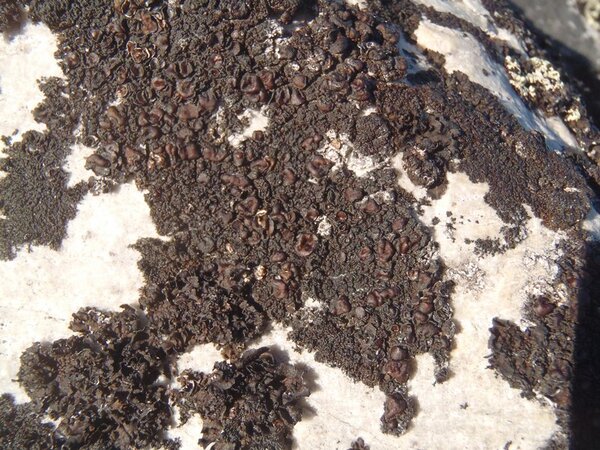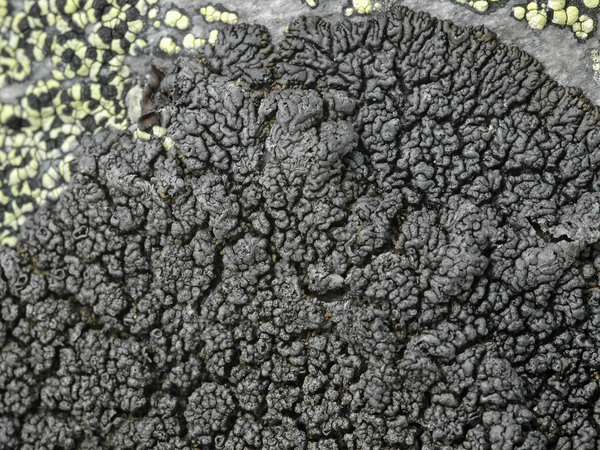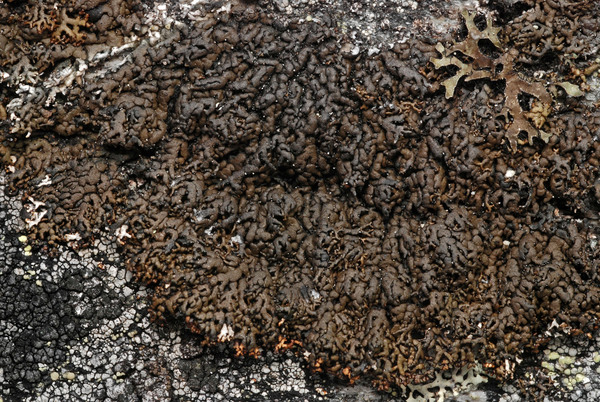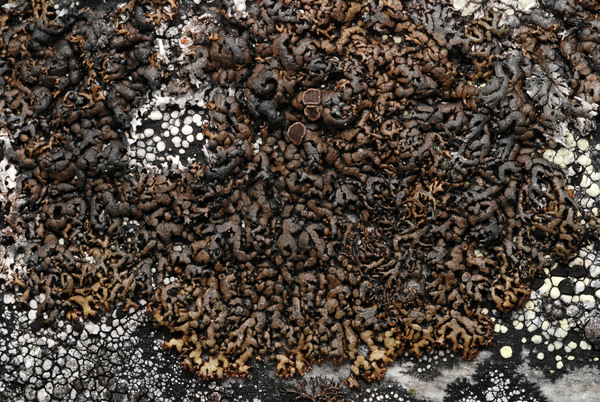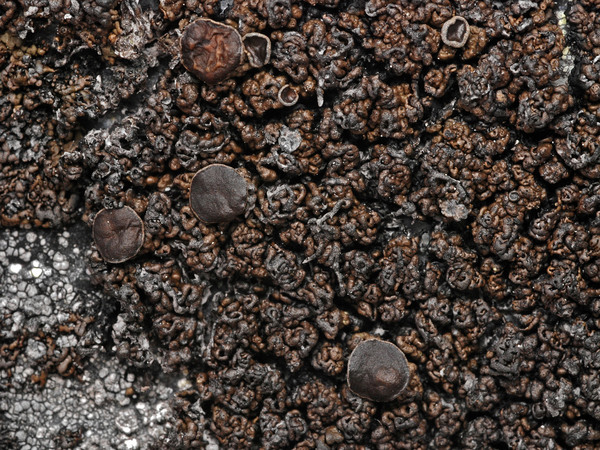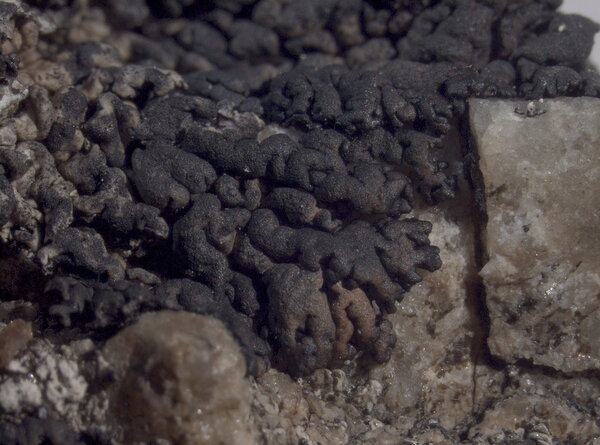Allantoparmelia alpicola (Th. Fr.) Essl.
Mycotaxon, 7: 46, 1978. Basionym: Parmelia alpicola Th. Fr. - N. Acta Reg. Soc. Sci. Upsal., ser. 3, 3: 57, 1861.
Synonyms: Hypogymnia alpicola (Th. Fr.) Hav.; Parmelia encausta var. alpicola (Th. Fr.) Nyl.; Parmelia jinretienii Gyeln.; Parmelia nigrita (Flot.) Hillmann
Distribution: N - TAA, Lomb.
Description: Thallus foliose, heteromerous, dorsiventral, closely adnate, forming regular or irregular up to to 8 cm wide rosettes, several thalli often merging to cover larger surfaces. Lobes 0.2-0.8(-1) mm wide, flattened to convex, often torulose-nodulose, with a crenulated margin. Upper surface blackish brown to greyish black, somewhat paler in shade-forms, dull or shiny towards margins; lower surface black, browned at lobe tips, erhizinate, attached by irregular cortical outgrowths (and hence sometimes appearing almost crustose). Upper cortex prosoplectenchymatous, with a non-pored epicortex, the cell walls containing isolichenan; medulla white, compact. Apothecia common, lecanorine, to 5 mm across, with a dark brown disc and a usually smooth thalline margin. Epithecium brown; hymenium and hypothecium colourless. Asci 8-spored, clavate, the K/I+ blue tholus penetrated by a faintly amyloid apical cushion with parallel or diverging flanks, the wall K/I-, surrounded by a K/I+ blue outer layer, Lecanora-type. Ascospores 1-celled, hyaline, broadly ellipsoid to subglobose, 7.5-10 x 5-7 μm. Pycnidia common, immersed, black. Conidia bifusiform or thickened at one end, 4.5-6 x c. 1 μm. Photobiont chlorococcoid. Spot tests: upper cortex K-, C-, KC-, P-; medulla K+ pale yellow, C+ red, KC+ red, P+ yellow. Chemistry: medulla with alectorialic and barbatolic acids.
Note: an arctic-alpine, circumpolar species found on hard siliceous rocks, often on quartz, in wind-exposed ridges near or above treeline, restricted to the Alps in Italy.
Growth form: Foliose, broad lobed
Substrata: rocks
Photobiont: green algae other than Trentepohlia
Reproductive strategy: mainly sexual
Commonnes-rarity: (info)
Alpine belt: very rare
Subalpine belt: extremely rare
Oromediterranean belt: absent
Montane belt: absent
Submediterranean belt: absent
Padanian area: absent
Humid submediterranean belt: absent
Humid mediterranean belt: absent
Dry mediterranean belt: absent

Predictive model
Growth form: Foliose, broad lobed
Substrata: rocks
Photobiont: green algae other than Trentepohlia
Reproductive strategy: mainly sexual
Commonnes-rarity: (info)
Alpine belt: very rare
Subalpine belt: extremely rare
Oromediterranean belt: absent
Montane belt: absent
Submediterranean belt: absent
Padanian area: absent
Humid submediterranean belt: absent
Humid mediterranean belt: absent
Dry mediterranean belt: absent

Predictive model
 Index Fungorum
Index Fungorum
 GBIF
GBIF
